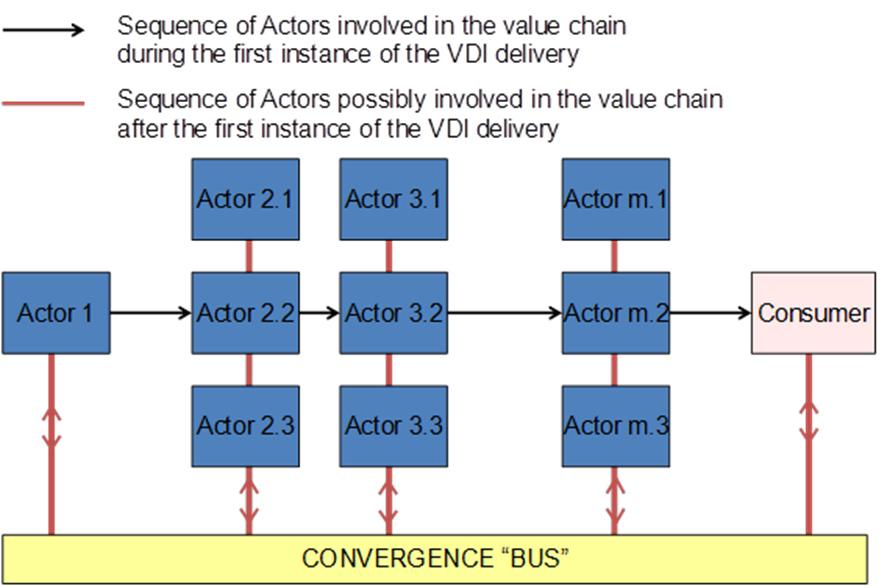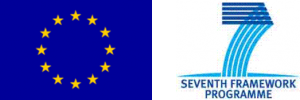Target Users & Benefits
CONVERGENCE targets professional and non-commercial providers and consumers of digital content, allowing them to publish, control, search for, and use content, independently of the structure or geographical location of the content. Users will be able to define their own policies for using, authenticating, protecting and revoking VDIs. The functionality provided by VDIs supports new models of use and new business models, difficult or impossible to implement on the current Internet architecture.
The CONVERGENCE framework will significantly extend opportunities for interactions among different actors along the value chain for digital items. It is useful to compare the value chain for traditional media with the equivalent picture for VDIs.
The figure below describes the value chain for an MPEG-21 DI, in this case a DVD.
![]()
Actor 1 creates the DI, defining the title of the video, rights and Permissions etc. (meta-information) and inserting video tracks (resources). Actor 2, a dubbing company, adds sound tracks (additional resources). Actor 3, the censorship board, adds information on the video’s certification (new meta-information). The chain continues until the DI reaches the final Actor (i.e. the consumer). The only way to edit or read a DI is locally, when it is physically available on a given actor’s premises. A downstream actor has no way of modifying choices that have been made upstream. Once the DI has been delivered to the next actor down the chain there is no way the upstream actor can update the information he or she has provided.

In CONVERGENCE, by contrast, VDIs are living objects, that can always be modified by any authorized actor in the value chain. In other words, CONVERGENCE extends the life of the value chain beyond the actions performed in the first delivery phase (i.e. when the VDI physically reaches the consumer for the first time), allowing authorized actors to operate on VDIs remotely, even when the VDIs are physically located on the premises of other actors
In brief, we can view the CONVERGENCE value chain as a logical “bus” allowing any station attached to the bus (any actors) to interact with any other station. The CONVERGENCE “bus” enables a broad range of operations that are not straightforward with conventional DIs. For example:
- Distributors (with appropriate rights) can remove certain portions of a movie they do not wish to distribute to their market;
- Producers and government agencies can inform customers who have bought a product (and its associated VDI) that the product has been found to be dangerous and should not be used;
- Customer and local distributors of a product (represented by a VDI) can check its availability at other distributors;
- The author of a CV (distributed as a VDI) can update the copy she has sent to perspective employers;
- The buyer of a movie in English can sell it to an Italian user, acquiring and inserting the Italian audio track;
- A patient can impose new restrictions on access to her medical record (represented as a VDI), requiring she should give her explicit consent, every time someone attempts to access the record.
READ MORE -> Research Description
